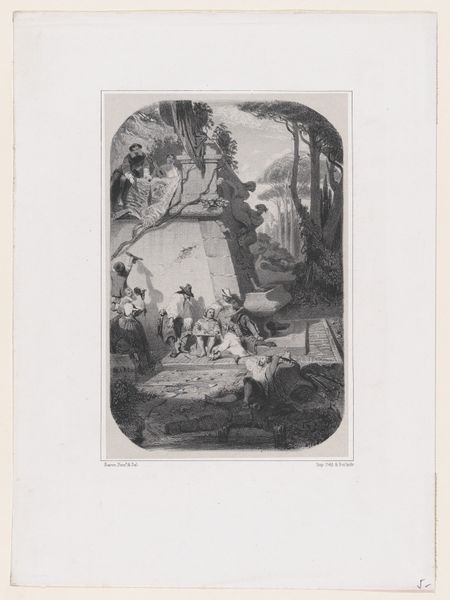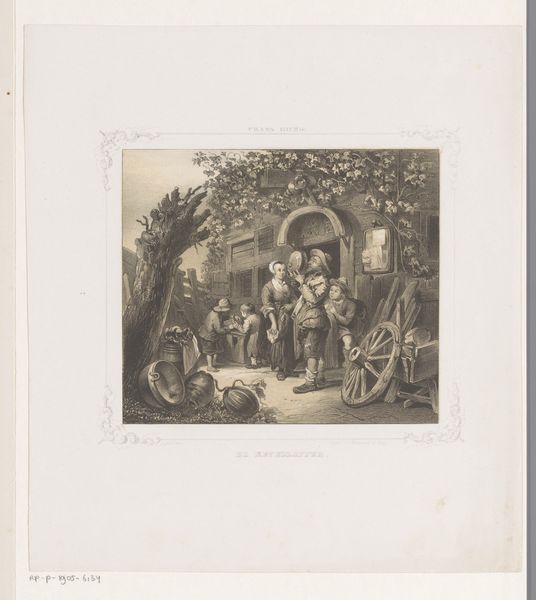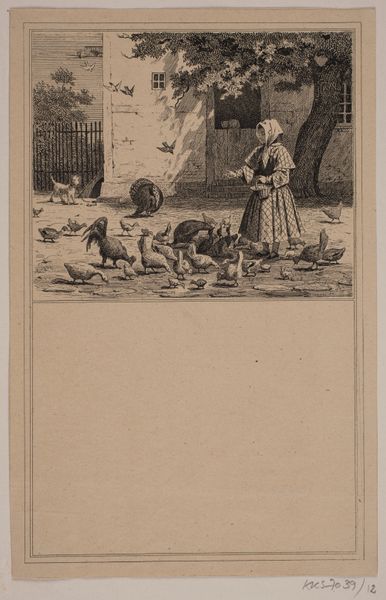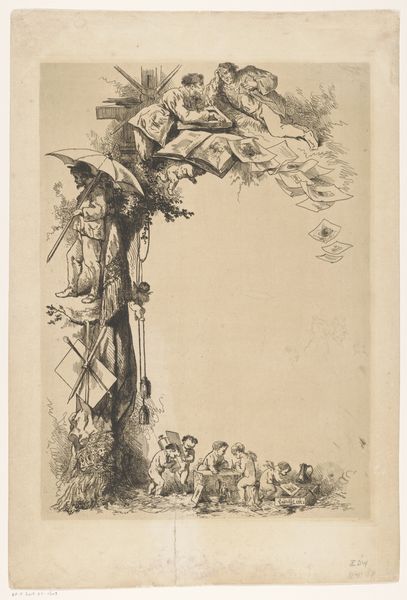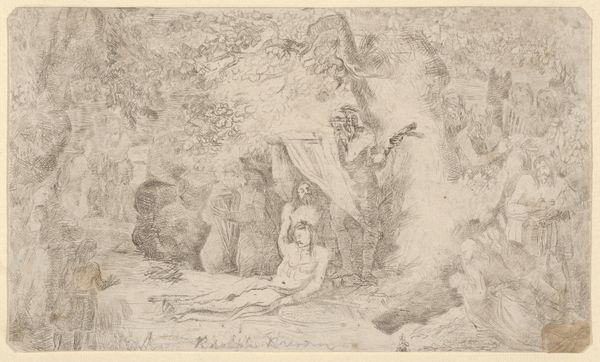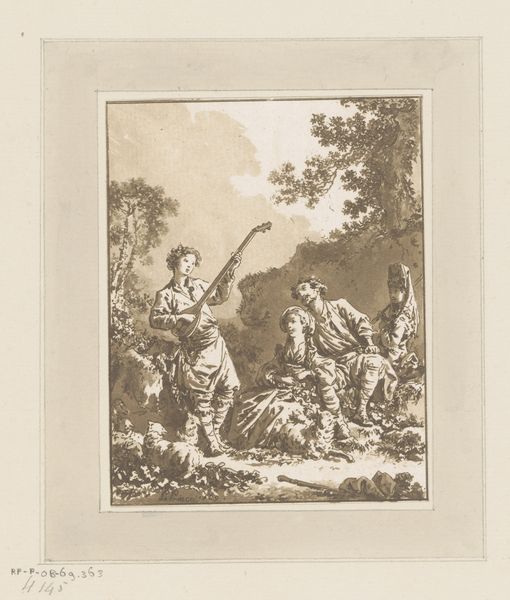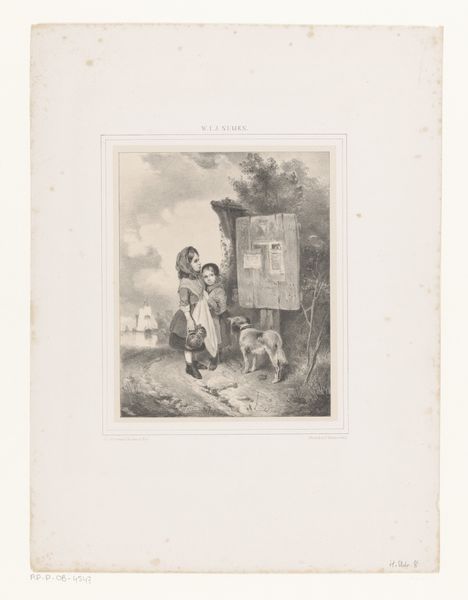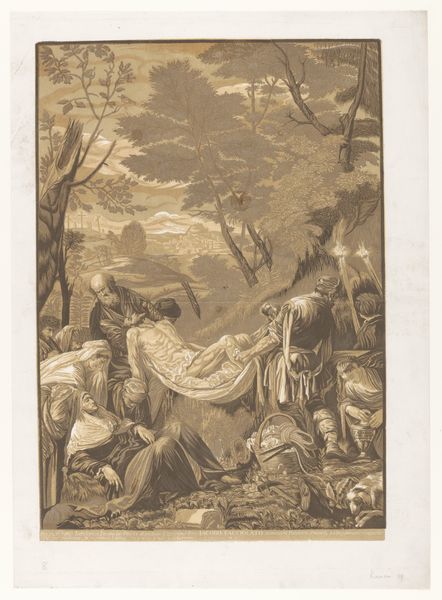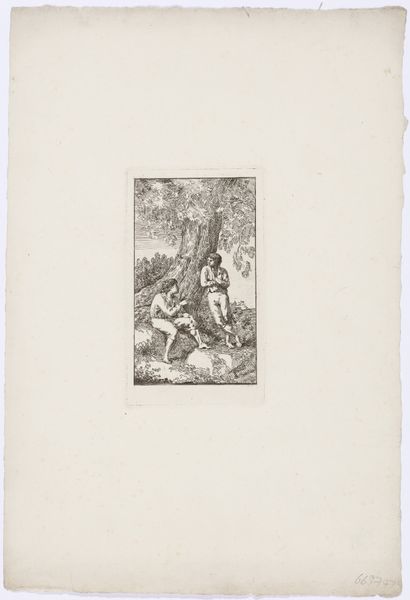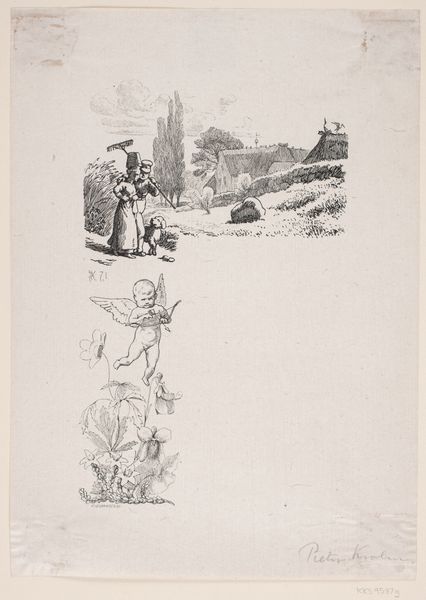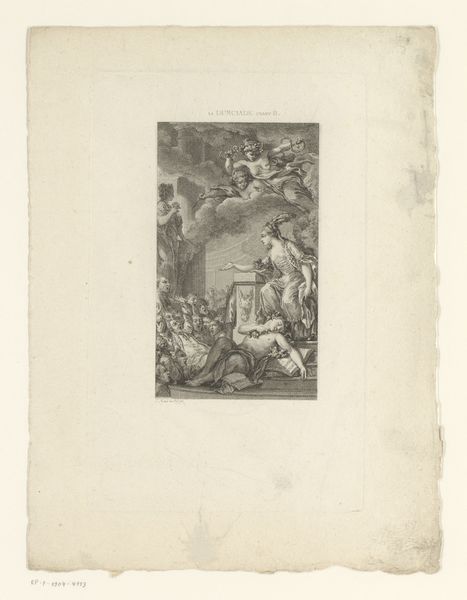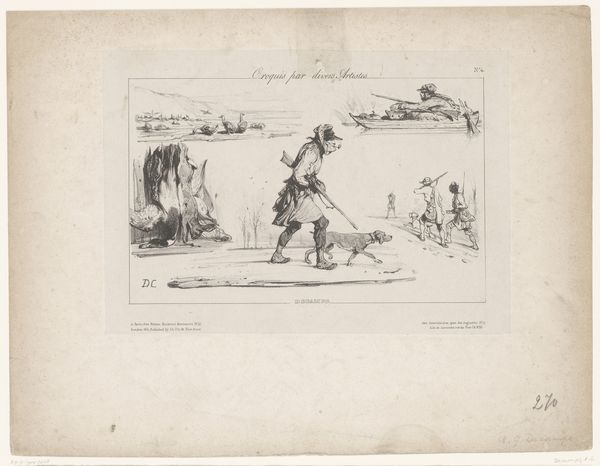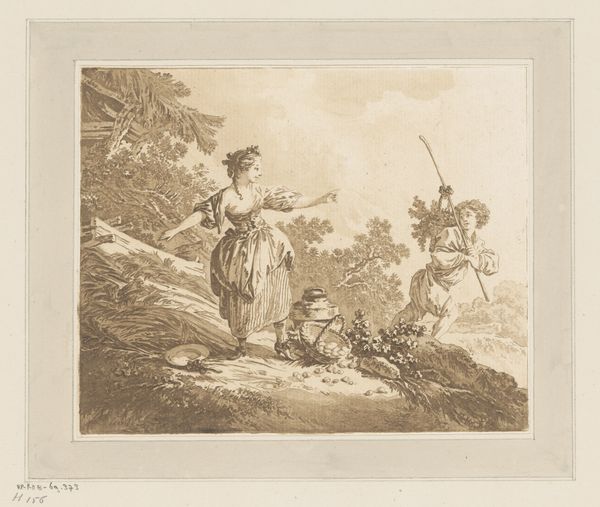
drawing, print, etching, paper
#
drawing
# print
#
impressionism
#
etching
#
landscape
#
etching
#
figuration
#
paper
#
genre-painting
Dimensions: 254 × 160 mm (plate); 330 × 202 mm (sheet)
Copyright: Public Domain
Editor: This is "A Children's Garden Party," an etching by James Tissot, dating from 1880. It has a sketch-like, ephemeral quality. Everyone seems to be in their own little world. What strikes you when you look at it? Curator: I notice immediately how Tissot uses light and shadow, particularly how the parasol acts as a symbolic shield. Think about the parasol – not just as sun protection, but also as a kind of status symbol. It implies leisure, a certain detachment from the world’s harsh realities. Consider, what emotional weight does this imagery hold in the collective consciousness? Editor: That's fascinating, I hadn't considered the parasol beyond its obvious function. So, it’s not just a sunny afternoon, but a statement? Curator: Precisely. Etchings like this allowed artists to disseminate images widely, influencing social perceptions of class, childhood, and leisure. How does Tissot employ symbolism here to portray not just a scene, but a whole world? The postures, the clothing… Editor: I see, it’s like a stage, each figure placed deliberately. Curator: Indeed. Now, think about the lasting legacy of these visual representations of childhood and societal roles. Do you think that modern audiences can recognize or appreciate this subtle narrative that the image unfolds? Editor: Probably some, but the nuances would be lost on most viewers. It’s like a photograph holding memories, yet those memories are only fully understood by those who were there. Curator: Exactly. In unpacking symbols, we confront how imagery carries the culture with it across time, resonating – or sometimes clashing – with our contemporary sensibilities. Editor: I'll never look at a parasol the same way again! It makes you think about what everyday objects can represent, and what future generations will see in our symbols.
Comments
No comments
Be the first to comment and join the conversation on the ultimate creative platform.
